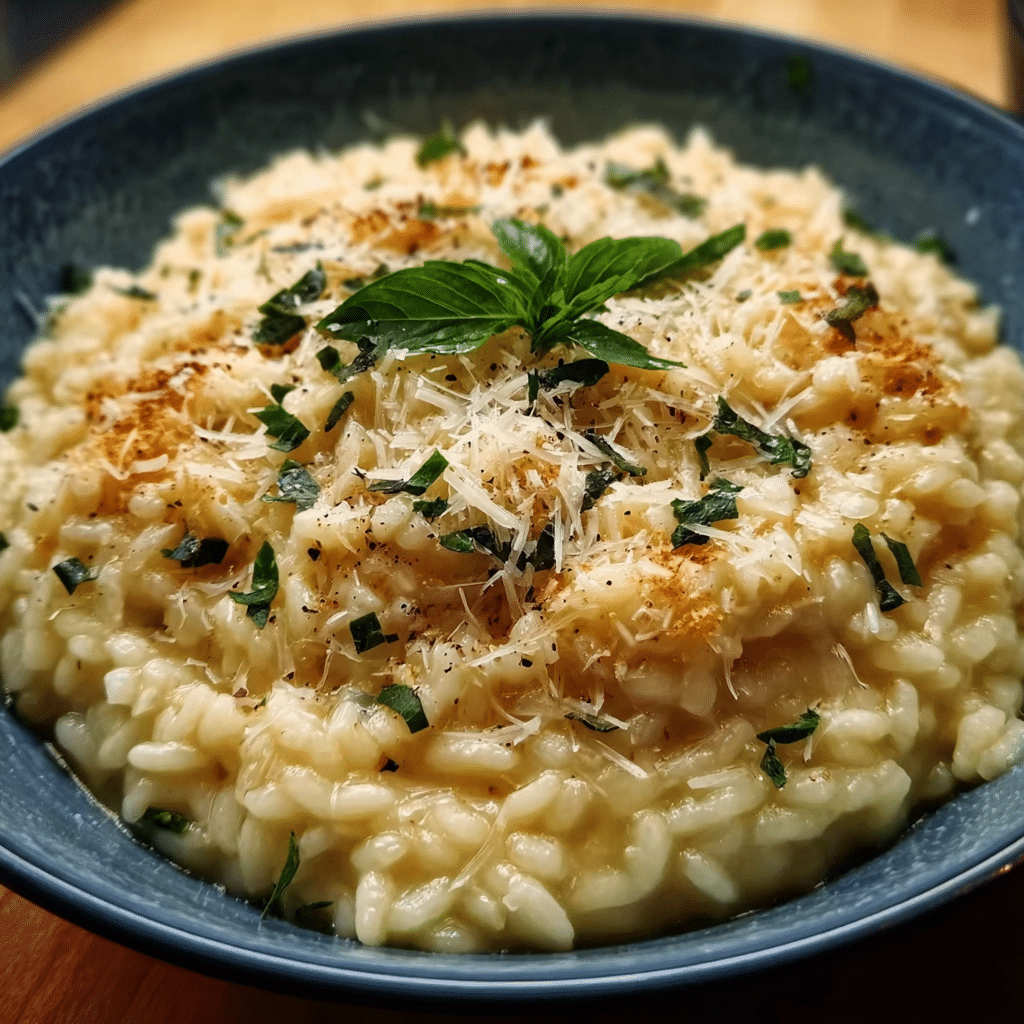White bean sausage is not just a dish; it’s an experience wrapped in warmth and flavor. My personal journey with this delightful skillet meal began during a particularly chilly autumn evening. While flipping through the pages of a well-worn cookbook passed down from my grandmother, I stumbled upon a recipe that immediately resonated with me. Intrigued by the combination of creamy white beans and savory sausage, I decided to give it a whirl in my own kitchen. That first bite felt like a warm hug, and from that moment on, I was a devoted fan of this comforting dish.

In the weeks that followed, I began to experiment with different ingredients, adding seasonal vegetables and herbs that spoke to the bounty of the fall harvest. I remember one evening, inviting a few friends over for a casual dinner party, and serving them my version of white bean sausage. Watching their faces light up as they took their first bites was one of those moments that solidified my love for this dish. It’s more than just a recipe; it’s a way to connect with others, to share warmth and comfort in a bowl.
The Story Behind This Recipe
The roots of white bean sausage can be traced back to various culinary traditions that celebrate the union of beans and meat. Beans have been a staple in many cultures, providing not only sustenance but also a rich source of protein. In Mediterranean cooking, for instance, beans are often paired with sausage to create hearty and satisfying meals. This dish embodies the spirit of resourcefulness, using simple ingredients to create something truly special.
What sets my version of white bean sausage apart is its flexibility. It’s a canvas for creativity; you can switch up the proteins, adjust the spices, or incorporate seasonal vegetables to make it your own. This adaptability makes it a perfect fit for busy families looking for quick dinner solutions. In under 30 minutes, you can have a nourishing meal on the table that feels like it took hours to prepare. It’s a lifesaver on those weeknights when time is limited, yet you still want to provide something wholesome for your loved ones.
Why You’ll Love This Dish
One of the most beautiful aspects of white bean sausage is its seasonal relevance. As the leaves turn and the air grows crisp, this dish feels like a natural choice for family dinners. The warmth of the skillet brings a cozy ambiance into your home, making it ideal for gathering around the table with family and friends. Picture it: a bustling kitchen filled with laughter and chatter, the aroma of garlic and sage wafting through the air, as everyone eagerly awaits a hearty meal.
Emotionally, this dish is tied to memories of my childhood, where the kitchen was always the heart of the home. Each time I make white bean sausage, I’m reminded of those evenings spent with family, sharing stories and enjoying each other’s company. It evokes feelings of nostalgia and comfort, making it a staple in my home today.
In this ultimate guide to white bean sausage, you’ll learn everything from the origins of this dish to practical tips on how to prepare it quickly and efficiently. We’ll delve into the cultural significance behind it, explore variations, and even discuss its nutritional benefits. Whether you’re a seasoned cook or a beginner, this guide will equip you with the knowledge to create a delightful meal that warms the soul and satisfies the palate. So, grab your apron, and let’s embark on this culinary journey together!
The Rich History and Cultural Significance of white bean sausage
To truly appreciate white bean sausage, we must first explore its rich history and cultural significance. This dish has roots that span across various regions, with each locality adding its unique twist to the recipe. Beans, particularly white beans like cannellini and navy beans, have been cultivated for centuries, and their combination with sausage represents a fusion of resourcefulness and flavor that resonates deeply in many cuisines.
Origins and History
Historically, beans and meat were often paired together in meals. In many cultures, beans served as a cheap and nutritious source of protein, while sausage provided the flavor and richness that made dishes more satisfying. The harmony between these two ingredients is evident in various traditional meals across Europe, particularly in Mediterranean countries like Italy and Greece. Italian cuisine, for instance, features white beans prominently in dishes like cassoulet and zuppa di fagioli, where they are often combined with local sausages to create hearty stews and soups.
As the recipe for white bean sausage traveled across borders, it evolved, incorporating local spices and cooking techniques. In the Southern United States, for example, the dish has taken on a unique character, often featuring smoked sausage and the addition of greens like collard or kale. This regional variation reflects the cultural melting pot of the South, where African, European, and Native American influences converge to create something truly special.
Cultural Significance
Today, white bean sausage is more than just a meal; it’s a dish that brings people together. It’s often served during family gatherings, celebrations, and holidays, symbolizing unity and comfort. In many Italian families, for instance, slow-cooked bean and sausage dishes are a staple on festive occasions, representing the importance of sharing food and creating memories with loved ones.
Moreover, the dish’s versatility allows it to fit into diverse culinary traditions. Whether it’s a comforting winter meal or a light summer dish with fresh vegetables, white bean sausage adapts beautifully to the seasons. This adaptability is key to its cultural relevance, as it reflects the changing nature of food and the importance of using seasonal ingredients.
Nutritional Benefits
From a nutritional standpoint, white bean sausage boasts numerous health benefits. White beans are an excellent source of dietary fiber, protein, and essential vitamins and minerals, including iron and magnesium. They are known for their ability to promote heart health, stabilize blood sugar levels, and support digestive health. When combined with sausage, the dish offers a balance of protein and carbohydrates, making it a satisfying meal that fuels the body.
Additionally, many modern recipes for white bean sausage focus on using leaner cuts of sausage or even plant-based alternatives, contributing to a healthier version of this classic dish. This makes it a great option for those looking to maintain a balanced diet without sacrificing flavor.
In conclusion, the rich history and cultural significance of white bean sausage make it a dish worth celebrating. It not only nourishes the body but also feeds the soul, creating connections between people and cultures. As we delve deeper into the preparation and variations of this dish, you’ll discover how to infuse your own family traditions into your version of white bean sausage, ensuring that it remains a beloved staple in your home for generations to come.
Essential Ingredients for Perfect white bean sausage
When it comes to creating the perfect white bean sausage dish, the ingredients play a pivotal role in achieving the rich flavors and delightful textures that make this meal so satisfying. Each component is crucial, not only for taste but also for the overall nutritional value of the dish. Let’s dive into the essential ingredients that come together to create a delicious white bean sausage skillet.
Essential Ingredients
- Olive Oil (2 tablespoons) – A high-quality extra virgin olive oil is ideal for sautéing vegetables. It adds a robust flavor and healthy fats, contributing to the overall richness of the dish.
- Sausage (12 ounces) – You can use any type of sausage you prefer; however, Italian sausage — either sweet or spicy — works wonders. The sausage is the star of the show, infusing the dish with its savory, aromatic qualities.
- White Beans (1 can or 15 ounces) – Cannellini or Great Northern beans are perfect choices. They provide creaminess and a subtle earthy flavor while also serving as a great source of protein and fiber.
- Onion (1 medium, diced) – A yellow or sweet onion adds a touch of sweetness when sautéed. Onions are foundational in many dishes, providing depth and flavor.
- Garlic (4 cloves, minced) – Fresh garlic enhances the aroma and taste of the white bean sausage skillet, bringing a pungent, savory note that elevates the entire dish.
- Bell Pepper (1 medium, diced) – Choose any color you like! Bell peppers add a crunchy texture and a hint of sweetness that balances the sausage’s richness.
- Spinach (2 cups, fresh) – This leafy green adds nutrition and a pop of color. Plus, it wilts down beautifully in the skillet, making it an easy way to sneak in some veggies.
- Vegetable or Chicken Broth (1 cup) – This will help create a flavorful base for the dish. The broth adds moisture and depth to the mixture of beans and sausage.
- Seasonings (Salt, Black Pepper, Red Pepper Flakes) – Seasoning is key! Adjust these to your taste, but a good mix will bring out the best in the white bean sausage.
- Fresh Parsley (for garnish) – A sprinkle of fresh herbs adds brightness and a touch of elegance to your finished dish.
Understanding the role of each ingredient is vital. For example, the choice of sausage can dramatically affect the flavor profile. If you prefer turkey or chicken sausages for a lighter option, those can certainly work too. Just be sure to choose a sausage with good seasoning. The white beans, being the backbone of the dish, provide protein and fiber, making it hearty and satisfying.
Print
White Bean Sausage Skillet
Ingredients
- 2 tablespoons olive oil
- 12 –14 ounces smoked or Italian sausage links (chicken or pork), cooked, 1/2-inch sliced
- 3 garlic cloves, minced
- 2 (15-ounce) cans white beans, like great northern, butter beans or cannellini, rinsed and drained
- 1 ½ cups chicken stock
- ½ teaspoon kosher salt
- ¼ teaspoon freshly cracked black pepper
- 1 teaspoon minced fresh thyme leaves
- ½ bunch curly kale, stems removed, leaves torn into bite size pieces, about 3 cups packed
- 1 tablespoon lemon juice
- ½ cup parmesan, plus extra for serving
- red pepper fakes, optional
Instructions
- In a 12-inch skillet, heat olive oil over medium-high heat. Add the sausage and cook on both sides until browned, about 4-5 minutes. Set the sausage aside.
- Add the garlic to the pan and cook until fragrant, about 15 seconds. Add ⅔ of the beans and 1 cup of chicken stock to the skillet and season with salt, pepper and thyme, stir to combine and bring to a simmer over medium heat.
- In a medium bowl, smash remaining beans with a fork until a thick paste is formed. Add the smashed beans back into the skillet and stir to combine. Simmer until the beans are heated through and the stock is simmering, about 2-3 minutes.
- Add the kale, reduce the heat to medium-low and cook, stirring often until sauce becomes creamy, is slightly reduced and kale has wilted, about 2 minutes more.
- Add the parmesan, lemon and sausage to the pan. Stir to combine. Add remaining stock a little at a time if you need more creaminess. Adjust seasoning to taste.
- Serve with extra parmesan cheese, red pepper flakes if desired, alongside some crusty bread!
Shopping Tips
When you’re shopping for the ingredients for your white bean sausage skillet, quality is crucial. Look for sausages that are made with natural ingredients and minimal fillers. If you’re opting for canned white beans, check the label to ensure they don’t contain added sugars or preservatives. Fresh vegetables should be vibrant and free from blemishes. For the best flavor, try to shop at local farmers’ markets or choose organic produce when possible.
Seasonal availability can also influence your shopping experience. For example, fresh spinach is abundant in the spring, while bell peppers are typically at their peak during summer. This not only enhances flavor but also supports local growers. Sourcing seasonal ingredients often results in better taste and lower costs.
Substitutions and Alternatives
Dietary restrictions? No problem! There are plenty of substitutions you can make without sacrificing flavor. For a vegetarian or vegan version of your white bean sausage skillet, consider using plant-based sausage alternatives available in many grocery stores. Additionally, for those who are gluten-sensitive, ensure that your sausage and broth are gluten-free.
If you’re low on time or ingredients, canned spinach can be used instead of fresh, although fresh is always preferred for texture and flavor. You could also swap out the bell pepper for other vegetables, such as zucchini or even mushrooms, which would lend an earthy flavor to the dish.
When it comes to storage, most ingredients can be stored easily. Fresh vegetables should be kept in the fridge, while canned goods can be stored in your pantry. If you have leftover cooked sausage, it can be refrigerated for up to four days or frozen for later use. White beans are versatile and can be used in various dishes, so don’t hesitate to keep extras on hand.
Lastly, if you’re watching your budget, buying dried beans in bulk can save you money in the long run. They require a bit of prep work, but soaking and cooking them in large batches can be a great way to ensure you have these nutritious legumes ready for your white bean sausage skillet and other meals.
Detailed Step-by-Step white bean sausage Cooking Instructions
Cooking a delicious white bean sausage skillet is not just about the ingredients; it’s also about the process. With a bit of organization and the right techniques, you can create a meal that impresses your family and friends while being easy enough for a weeknight dinner. Let’s break down the steps to ensure your dish is a success.
Preparation Steps
- Mise en Place: Start by preparing all your ingredients. Dice the onion and bell pepper, mince the garlic, and rinse and drain the white beans. Having everything prepped and in place will make the cooking process smoother and more enjoyable.
- Heat the Oil: In a large skillet (preferably cast iron) over medium heat, add the 2 tablespoons of olive oil. Allow it to heat until shimmering but not smoking. This is the moment where your cooking begins to come alive with aromas.
- Sauté the Vegetables: Add the diced onions and bell peppers to the skillet. Sauté for about 5 minutes until they become tender and the onions are translucent. Stir occasionally to prevent sticking. This step builds the flavor base of your white bean sausage dish.
- Add Garlic: Toss in the minced garlic and continue to sauté for an additional 1-2 minutes. You want to be cautious not to burn the garlic, as it can turn bitter.
- Brown the Sausage: Crumble in the sausage (if using bulk sausage) or add sliced sausages to the skillet. Cook for approximately 5-7 minutes until browned and cooked through. Stir occasionally to ensure even cooking. The sausage will release its juices and flavor the vegetables.
- Incorporate the Beans: Once the sausage is cooked, gently fold in the rinsed white beans. Stir well to combine, allowing the beans to absorb the flavors of the skillet.
- Add Broth: Pour in the broth to create a bit of sauce. Bring the mixture to a gentle simmer, allowing the beans to heat through and soak up the flavors. This should take about 3-5 minutes.
- Add Spinach: Finally, fold in the fresh spinach and cook until wilted, about 2-3 minutes. The vibrant green color will brighten the dish and add nutritional value.
Cooking Process
Throughout the cooking process, pay attention to the visual cues and sensory indicators. The onions should be soft and translucent, while the sausage should be nicely browned. The aroma of garlic and sausage filling your kitchen is a sign that you’re on the right track. Don’t be afraid to taste as you go; this is your opportunity to adjust seasonings to your personal preference!
A common mistake many home cooks make is overcrowding the skillet. Ensure there’s enough space for the ingredients to sauté properly. If your skillet is too crowded, the food will steam instead of brown, which can affect the overall flavor and texture. If necessary, cook in batches.
Final Assembly
- Season to Taste: Once everything is combined and heated through, taste the mixture and adjust the seasoning with salt, black pepper, and red pepper flakes. This is crucial as it brings all the flavors together.
- Garnish: Remove the skillet from the heat and sprinkle freshly chopped parsley over the top for a pop of color and freshness.
- Serve: Dish out the white bean sausage skillet onto plates or serve directly from the skillet for a rustic presentation. Pair it with crusty bread or over a bed of rice for a complete meal.
- Enjoy: Take a moment to appreciate the aromas and colors of your meal before diving in. Enjoy the fruits of your labor!
Cooking time for this white bean sausage skillet is approximately 30 minutes, making it a quick yet fulfilling meal. Remember, the key to a successful dish lies in the details: proper preparation, thoughtful seasoning, and mindful cooking techniques. With these steps, you’ll create a dish that not only satisfies hunger but also warms the soul. Happy cooking!
Professional Tips and Techniques for white bean sausage
When it comes to crafting a delicious white bean sausage skillet, there are several professional tips and techniques that can elevate your dish from ordinary to extraordinary. Drawing on years of culinary experience and enthusiasm for cooking, I’m excited to share my insights that will help you create a meal that not only tastes fantastic but also impresses your family and friends.
Professional Techniques
One of the most important aspects of cooking a savory white bean sausage dish is understanding how to layer flavors. Start by sautéing your sausage in a heavy skillet over medium-high heat. Look for a good-quality sausage, as it will significantly impact the flavor of the dish. I recommend using Italian sausage, which is packed with herbs and spices that complement the mildness of the white beans beautifully. As the sausage begins to brown, you’ll notice a wonderful aroma filling your kitchen—this is the Maillard effect in action, which creates depth in flavor.
Next, consider the texture of your ingredients. You want a good balance between the creamy texture of the white beans and the hearty bite of the sausage. Before adding the beans, sauté onions, garlic, and any other vegetables you enjoy, such as bell peppers or spinach. This not only enhances the flavor but also adds a beautiful array of colors to your skillet. For the best results, chop your vegetables uniformly to ensure even cooking.
Don’t forget about seasoning! A pinch of salt during the cooking process can help bring out the natural flavors of the ingredients. Additionally, a sprinkle of freshly cracked black pepper will add just the right amount of warmth. If you enjoy a touch of heat, consider adding red pepper flakes or a dash of hot sauce. Lastly, finish your dish with a splash of acidity—be it a squeeze of lemon juice or a drizzle of balsamic vinegar—to brighten the overall flavor profile.
Troubleshooting Guide
Even the best cooks encounter challenges when making a white bean sausage skillet. One common issue is overcooking the beans, leading to a mushy texture. To avoid this, I recommend using canned white beans that have been rinsed and drained. If you prefer dried beans, soak and cook them until just tender before adding them to the skillet.
Another potential pitfall is ending up with a dish that is too greasy. If your sausage releases too much fat, don’t hesitate to drain some off before adding the other ingredients. This will keep your dish from becoming overly heavy. Conversely, if your skillet seems too dry, a splash of broth or white wine can help create a luscious sauce that binds everything together.
For those who may struggle with timing, consider meal prep strategies. You can prepare the sausage and vegetable mixture ahead of time and store it in the refrigerator for up to two days. When you’re ready to serve, simply reheat and add your white beans. This not only saves time but also allows the flavors to meld together beautifully.
Presentation Tips
Presentation is key to making your white bean sausage skillet visually appealing. Start by serving the dish in a rustic cast-iron skillet or a vibrant ceramic dish to highlight the colorful ingredients. A sprinkle of fresh herbs, such as parsley or basil, can add a pop of color and freshness. If you’re feeling fancy, a drizzle of high-quality olive oil or a dollop of crème fraîche can elevate the dish and create an inviting finish.
As for wine pairings, a crisp white wine, such as Sauvignon Blanc or Pinot Grigio, complements the flavors of the dish beautifully. If you’re serving your white bean sausage skillet for a special occasion, a light-bodied red wine, like Pinot Noir, can also work wonderfully. The key is to choose a wine that enhances the dish without overpowering it.
In conclusion, these professional tips and techniques will not only help you perfect your white bean sausage skillet but also instill confidence in your cooking. Remember, practice makes perfect, and the more you cook, the more comfortable you will become in the kitchen. Enjoy the process, and don’t forget to share your delicious creations with loved ones!

Creative Variations and Adaptations of white bean sausage
While the classic white bean sausage skillet recipe is comforting and satisfying, exploring creative variations can introduce new flavors and textures, making your meal even more exciting. Whether you want to play with seasonal ingredients or adapt the recipe to accommodate dietary restrictions, there are countless ways to make this dish your own.
Seasonal Variations
Seasonal ingredients are a fantastic way to keep your white bean sausage skillet fresh and exciting throughout the year. In the spring, consider adding asparagus and peas for a vibrant, green touch. The crispness of these vegetables pairs beautifully with the creamy texture of the white beans. Summer is the perfect time to incorporate fresh tomatoes and zucchini. Their natural sweetness will enhance the dish, and a handful of fresh basil will add an aromatic finish.
As fall approaches, think about integrating root vegetables like sweet potatoes or carrots. These hearty ingredients will add a touch of sweetness and a lovely contrast in texture. Finally, winter is the perfect time to embrace heartier greens like kale or collard greens, which can stand up to the robust flavors of the sausage while providing a nutritious boost.
Dietary Adaptations
In today’s culinary landscape, it’s essential to be mindful of various dietary needs. Fortunately, adapting the white bean sausage skillet to suit different diets is quite simple. For a vegan version, replace the sausage with a plant-based alternative, such as tempeh or chickpea patties, and use vegetable broth instead of chicken broth. You can still achieve a delightful depth of flavor by seasoning with herbs and spices, such as smoked paprika and garlic powder.
If you’re following a gluten-free diet, make sure to choose gluten-free sausage or omit it altogether and replace it with mushrooms for a hearty texture. Additionally, you can serve the dish over quinoa or brown rice for a filling meal that adheres to gluten-free guidelines.
Creative Twists
For those who love a little spice, consider adding chorizo sausage instead of Italian sausage. The smoky flavor will add a new dimension to your white bean sausage skillet. You can also experiment with different cooking methods: try making a slow-cooked version in a crockpot, allowing the flavors to meld together while you go about your day. Alternatively, roasting the ingredients in the oven can create a delightful caramelization that enhances the overall taste.
If you find yourself with leftovers, fear not! Transform your white bean sausage skillet into a hearty breakfast hash by reheating it in a skillet and serving it topped with a fried or poached egg. You can even incorporate it into a breakfast burrito by wrapping it in a tortilla with fresh avocado and salsa.
In conclusion, the versatility of the white bean sausage skillet makes it a fantastic canvas for culinary creativity. By embracing seasonal ingredients, accommodating dietary preferences, and experimenting with different cooking methods, you can create a dish that remains exciting and enjoyable every time you make it. So go ahead—let your imagination run wild in the kitchen, and share your delicious creations with family and friends!
Storage, Reheating, and Meal Prep for white bean sausage
When it comes to cooking, particularly with hearty dishes like white bean sausage, understanding how to store your food properly can greatly extend its life, retain its flavor, and ensure food safety. Whether you’re making a big batch for meal prep or just have leftovers from a cozy dinner, knowing the best storage methods for white bean sausage is essential.
Short-term Storage
If you find yourself with leftover white bean sausage after a delicious meal, the first step is to allow it to cool to room temperature. Once cooled, transfer the dish into an airtight container. Glass containers with tight-sealing lids are ideal as they prevent moisture loss and help avoid any unwanted odors from contaminating your dish. If you’re using plastic containers, make sure they’re BPA-free. Ideally, your white bean sausage should be stored in the refrigerator and consumed within 3 to 5 days for optimal freshness.
For best results, consider portioning your white bean sausage into individual servings before refrigerating. This makes it easier to grab a quick lunch or dinner during your busy week. I personally love to use mason jars for meal prep because they not only keep everything fresh, but they also look pretty on the shelf! Just remember to leave some space at the top of the jar if you’re storing something like a sauce or stew, as it may expand slightly when frozen.
Freezing and Long-term Storage
If you want to store white bean sausage for a longer period, freezing is your best bet. This is an effective method to preserve the quality of your dish while maintaining its flavor. To freeze your white bean sausage, first, allow it to cool completely. Then, portion it out into freezer-safe containers or zip-top freezer bags. One tip I’ve learned is to flatten the bags before sealing; this not only saves space but also helps the food freeze and thaw more evenly.
When freezing, it’s important to label everything. Write the date, contents, and any reheating instructions on the bag or container. This way, you won’t have to play a guessing game months later when you’re rummaging through your freezer! White bean sausage can be stored in the freezer for up to 3 months. After that, while it may still be safe to eat, the quality may start to deteriorate.
Reheating Best Practices
When you’re ready to enjoy your frozen white bean sausage, there are several ways to reheat it without sacrificing quality. The best method is to plan ahead and transfer your frozen dish to the refrigerator the night before to allow it to thaw gradually. This slow thawing helps maintain the texture of the beans and sausage.
If you’re short on time, you can also reheat directly from the freezer. The stovetop is my preferred method for reheating white bean sausage; simply place it in a skillet over medium heat, adding a splash of broth or water to help steam the dish and keep it moist. Stir occasionally until heated through. This method not only warms the food but also revives the flavors beautifully.
Alternatively, you can use the microwave. Place your white bean sausage in a microwave-safe dish, cover it with a microwave-safe lid or plate, and heat on medium power in short increments of 1-2 minutes, stirring in between. Be cautious, though, as microwaves can sometimes create hot spots, so make sure to check that it’s heated evenly throughout.
Remember, food safety is crucial. Always ensure that your white bean sausage reaches an internal temperature of 165°F (74°C) when reheated. This is especially important if it has been thawed and then heated.
In summary, whether you’re storing your white bean sausage for a few days or wanting to keep it for weeks, following these guidelines will help you enjoy this delightful dish while minimizing waste and ensuring food safety. With proper storage, you’ll always have a comforting meal at your fingertips!
Nutritional Benefits and Health Information
When we think about comfort food, white bean sausage often tops the list, bringing together hearty ingredients that are not only delicious but also packed with nutritional benefits. Understanding the nutritional profile of this dish can help you appreciate it even more and make informed choices about your diet.
Nutritional Profile
White bean sausage is a wonderful blend of protein, fiber, and essential nutrients. The primary ingredients—white beans and sausage—contribute a range of macronutrients. For a typical serving of white bean sausage (about one cup), you can expect to find approximately:
- Calories: 250-350 calories, depending on the type of sausage used.
- Protein: 20-25 grams, primarily from the sausage and beans.
- Carbohydrates: 30-40 grams, largely from the beans and any added vegetables.
- Fat: 10-15 grams, which varies by the sausage type (pork, turkey, or plant-based).
- Fiber: 7-10 grams, thanks to the white beans.
This combination makes white bean sausage a filling option that can keep you satisfied for hours. The fiber content helps regulate digestion and can contribute to heart health.
Health Benefits
The health benefits of white bean sausage extend beyond just the macro breakdown. White beans are packed with nutrients like folate, iron, magnesium, and potassium. Folate is essential for cell function and tissue growth, making it particularly important for pregnant women. Iron supports healthy blood production, while magnesium plays a critical role in over 300 enzymatic reactions in the body.
On the other hand, the type of sausage you choose can also influence the health benefits of your dish. Turkey or chicken sausage tends to be lower in fat compared to traditional pork sausage, making it a healthier option. If you’re opting for plant-based sausage, you can enjoy a rich source of protein without the saturated fats found in animal products. It’s a win-win for both taste and health!

Dietary Considerations
When it comes to dietary considerations, white bean sausage can fit into various eating plans. For those following a low-carb diet, you might want to adjust the bean quantity or choose a lower-carb sausage option. For vegetarians or vegans, plant-based sausages can provide the necessary protein without compromising dietary preferences.
Allergen considerations are also important. If you’re making white bean sausage for a group, be mindful of common allergens. Gluten is often found in certain sausage types, so look for gluten-free options if you’re accommodating someone with a gluten intolerance. Additionally, some brands of sausage may contain dairy or soy, so always check labels if there are allergies to consider.
In the realm of healthy modifications, consider adding more vegetables to the mix. Spinach, kale, or bell peppers can increase the nutritional content while adding vibrant colors and textures. You could also experiment with different spices and herbs to enhance flavor without adding extra calories.
When comparing white bean sausage to similar dishes, it’s clear that this recipe holds its own. Many bean-based stews or casseroles may not offer the same protein punch that sausage does, while traditional meat-heavy dishes often bring a higher fat content. By choosing white bean sausage, you can enjoy the best of both worlds—hearty satisfaction without excessive calories.
In conclusion, white bean sausage is not just a comforting meal but a nutritious option that can fit into various dietary needs. Understanding its nutritional benefits allows you to enjoy it more mindfully, appreciate its wholesome ingredients, and even innovate with new variations to keep your meals exciting and healthy!
Frequently Asked Questions About White Bean Sausage
Sausage and white beans recipe
For a delicious sausage and white beans recipe, start by selecting high-quality sausages, such as Italian or chicken sausage, which add great flavor. Begin by browning the sausages in a large skillet, then remove them and set aside. In the same skillet, sauté onions, garlic, and any preferred vegetables like bell peppers or carrots until soft. Add drained canned white beans, diced tomatoes, and seasonings like thyme, rosemary, and red pepper flakes. Finally, return the sausages to the skillet, simmer everything together for about 20 minutes, and serve hot, garnished with fresh herbs for a burst of flavor.
Sausage and beans recipe
A simple sausage and beans recipe can be made by first browning your choice of sausage—whether it’s pork, turkey, or vegan options—in a large pot. Once the sausage is browned, add chopped onions, garlic, and celery, cooking until the vegetables are tender. Stir in canned beans (like kidney or pinto beans), diced tomatoes, and a splash of broth for added moisture. Season with spices such as cumin, paprika, and bay leaves, then let it simmer for at least 30 minutes to enhance the flavors. Serve it warm with crusty bread or over rice for a hearty meal.
White beans sausage tomato
To make a satisfying white beans, sausage, and tomato dish, start by browning your favorite sausage in a skillet. Once cooked, remove the sausage and sauté chopped onions and garlic in the skillet until fragrant. Next, add canned white beans, crushed tomatoes, and a splash of chicken or vegetable broth. Season with Italian herbs like basil and oregano, then return the sausage to the skillet, allowing everything to simmer together for about 20-30 minutes. This allows the flavors to meld beautifully, resulting in a comforting dish that pairs well with a side salad or over pasta.
Italian sausage and white beans
For a flavorful Italian sausage and white beans dish, begin by browning the Italian sausage links in a large pot until they are well-cooked. Remove the sausage and use the drippings to sauté onions, garlic, and any additional vegetables like spinach or kale. Incorporate canned white beans, diced tomatoes, and a splash of white wine or broth to deglaze the pan, scraping up any flavorful bits. Season with Italian herbs such as parsley and thyme, then slice the sausage and return it to the pot, allowing everything to simmer for about 15-20 minutes. This dish is perfect served over polenta or with a side of garlic bread for a complete meal.





